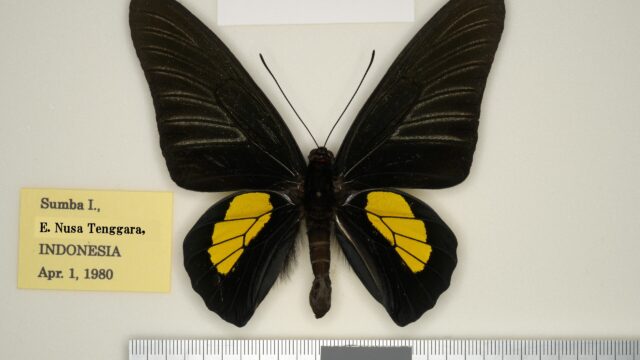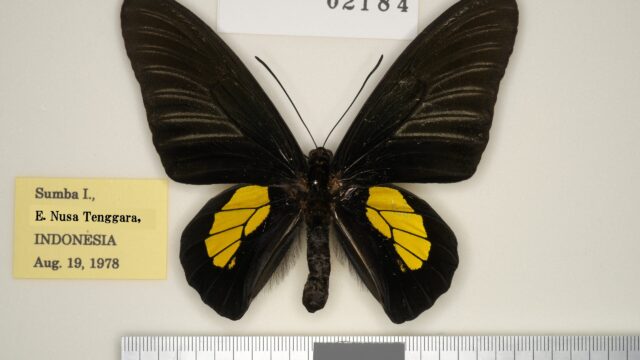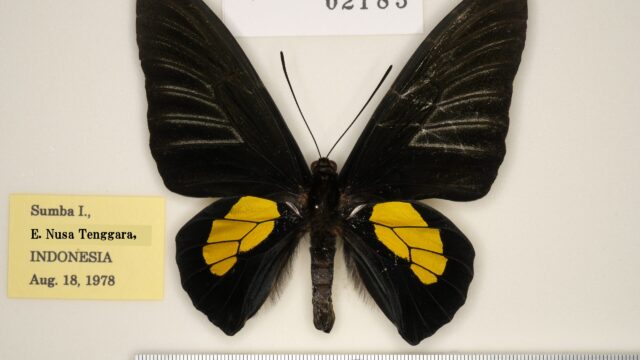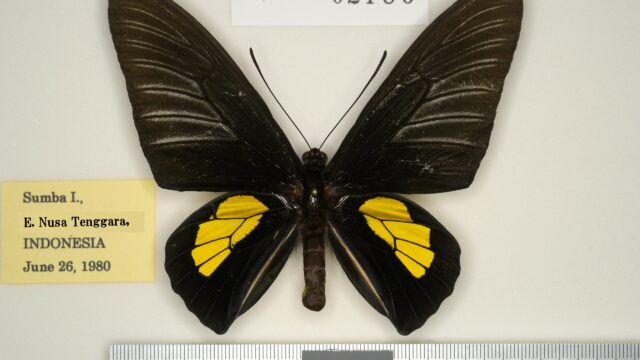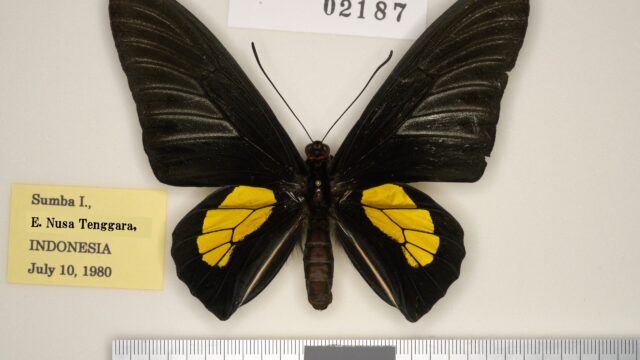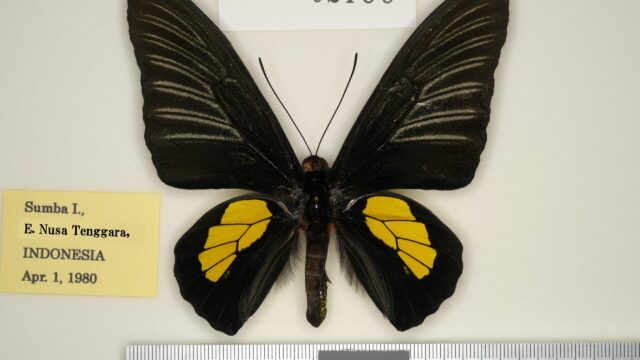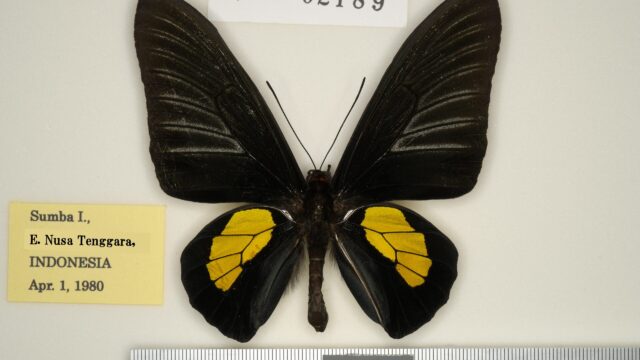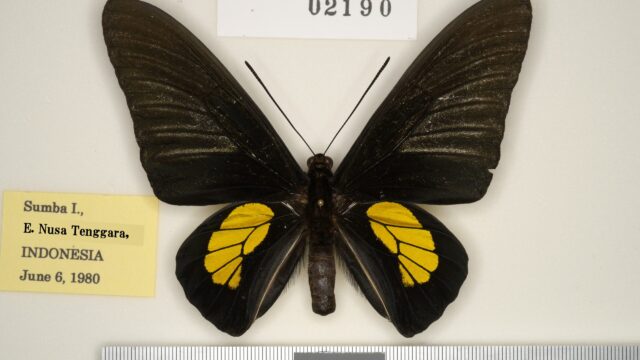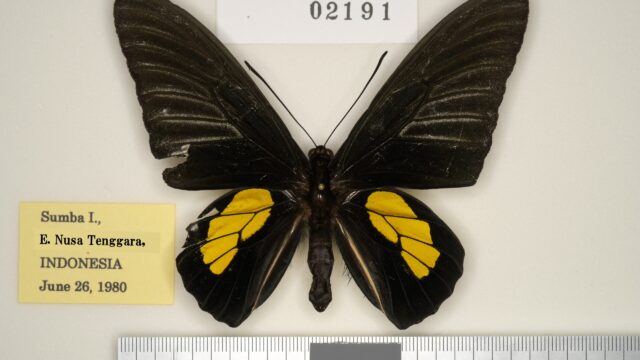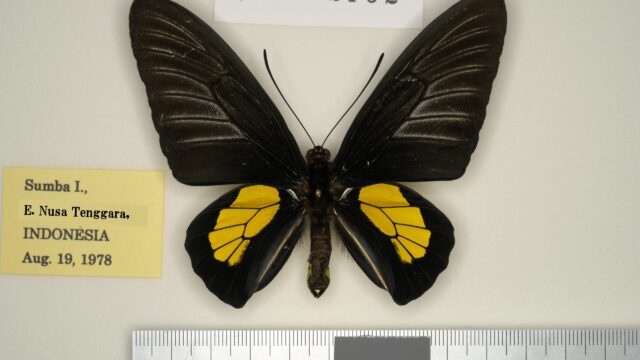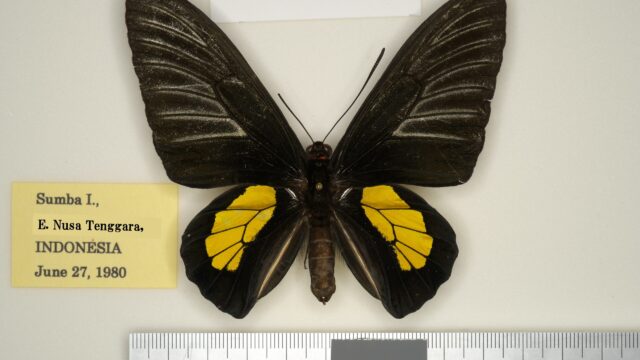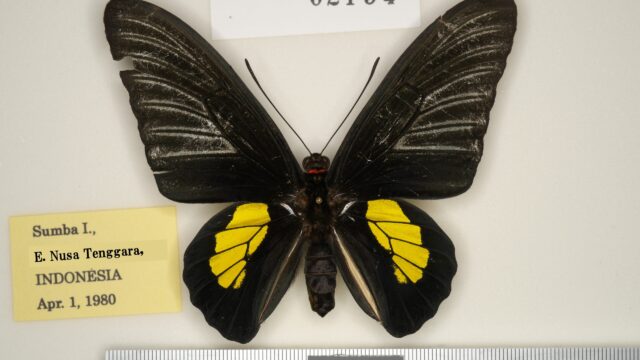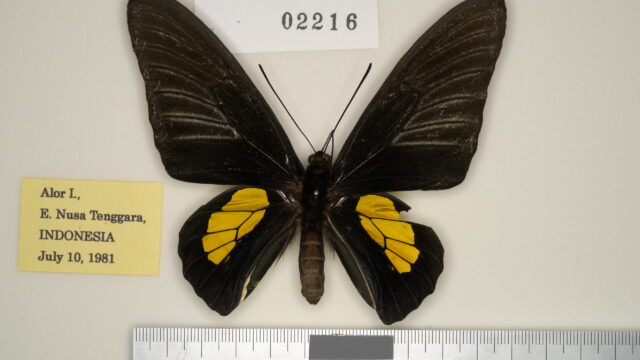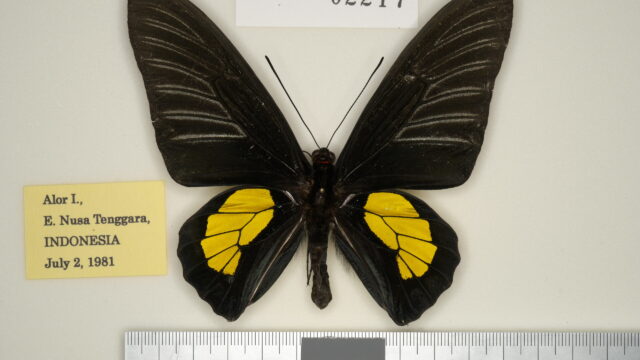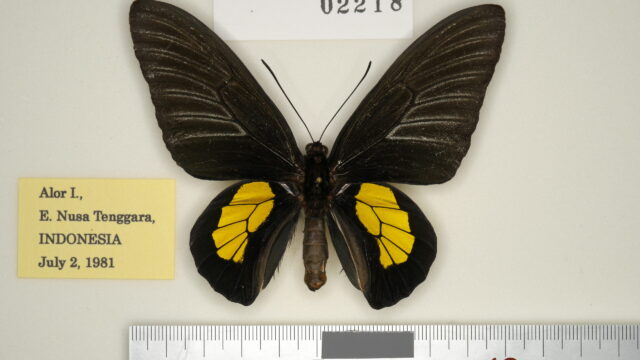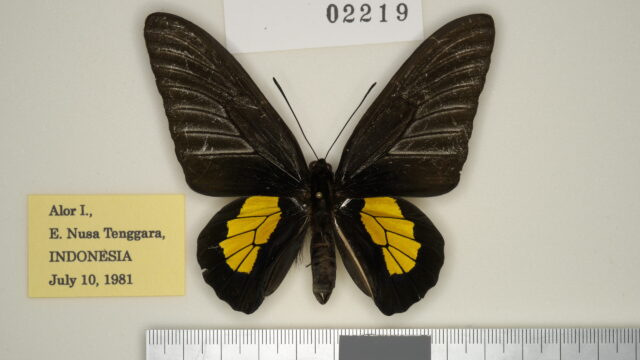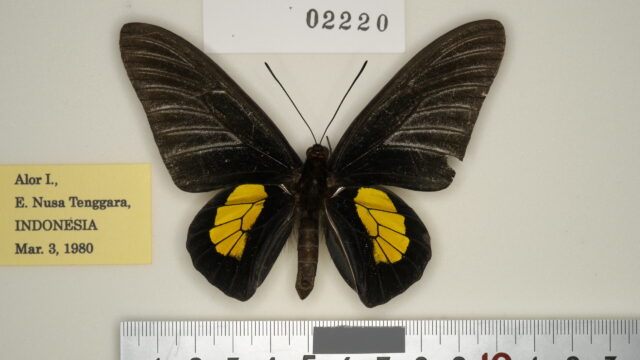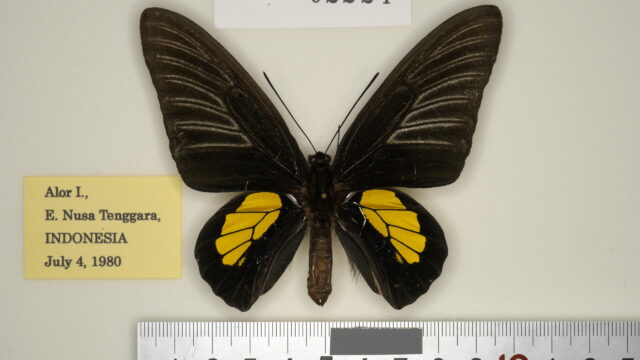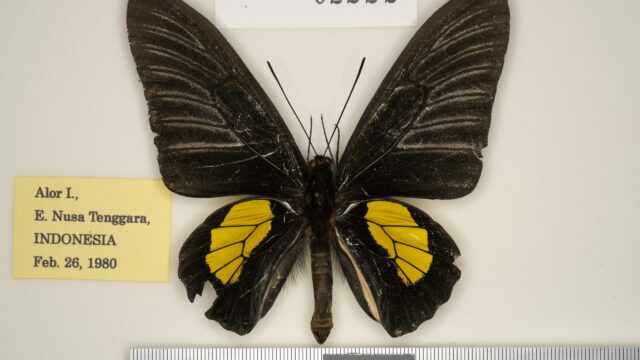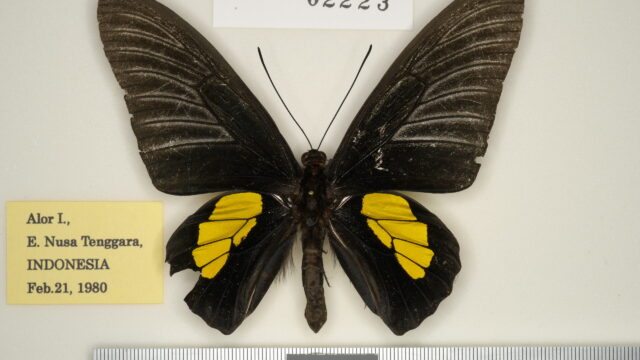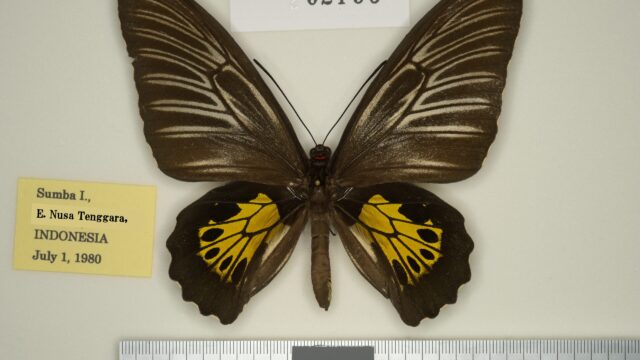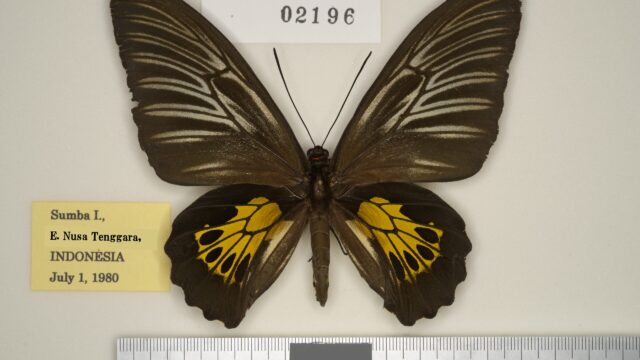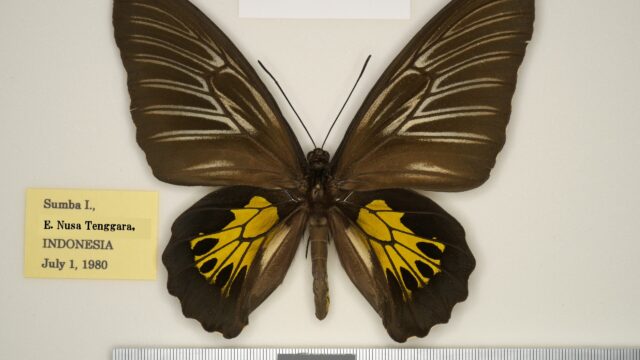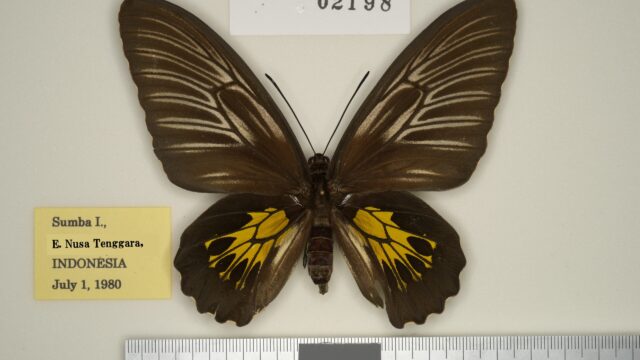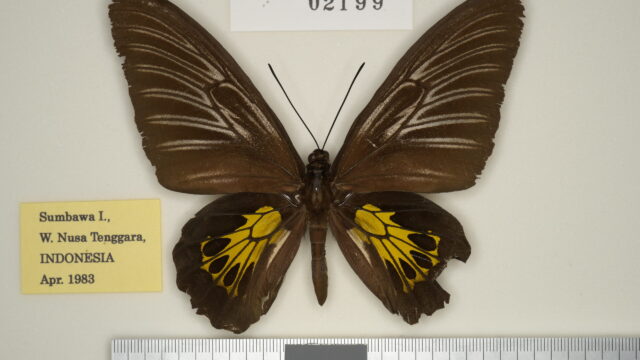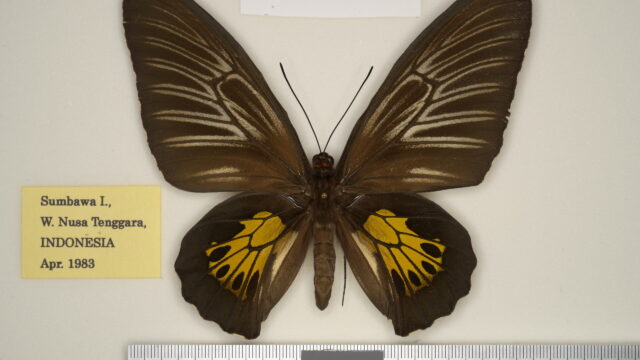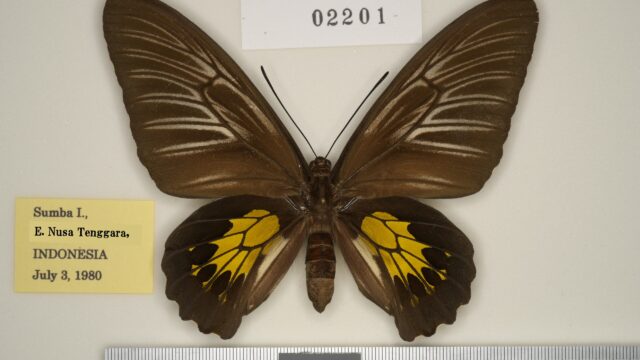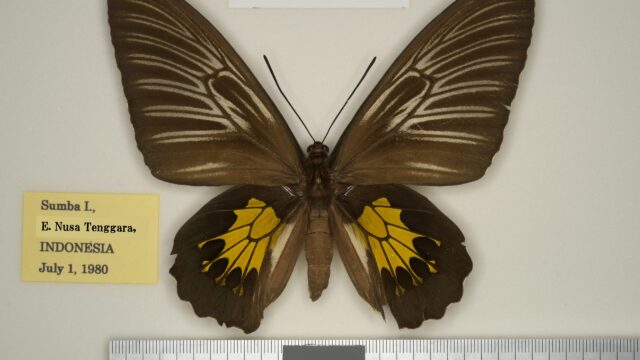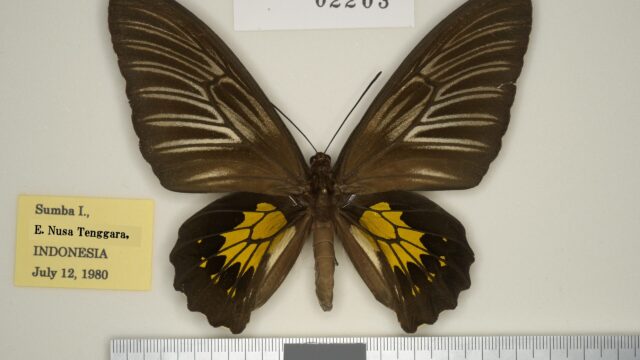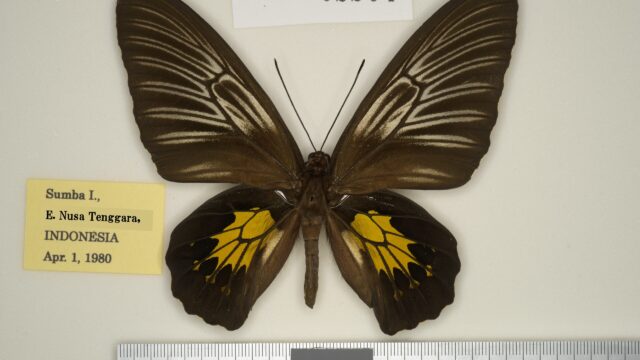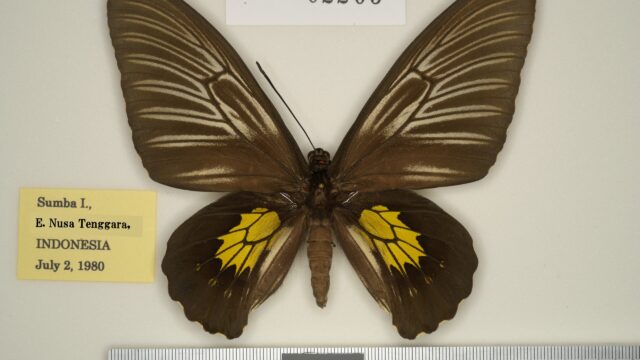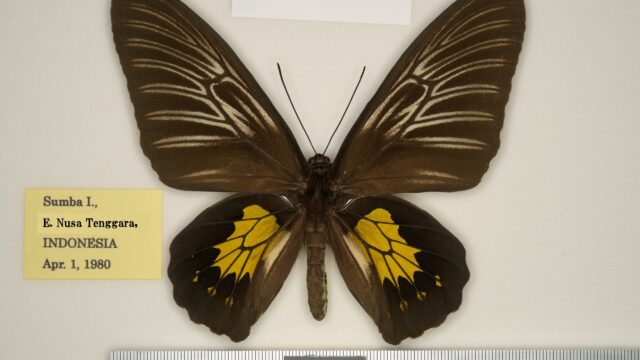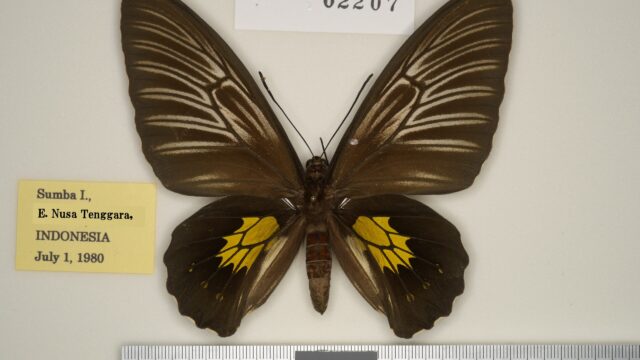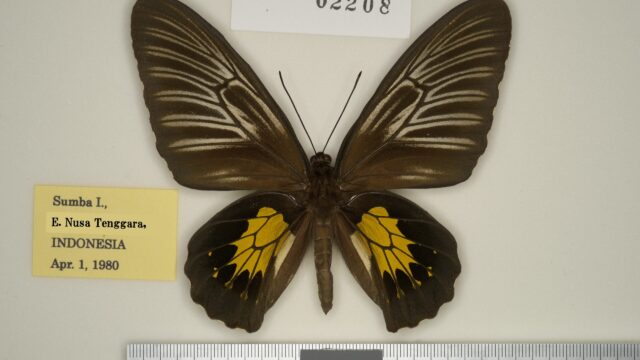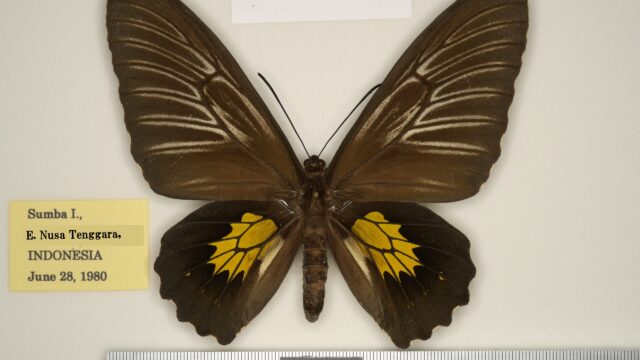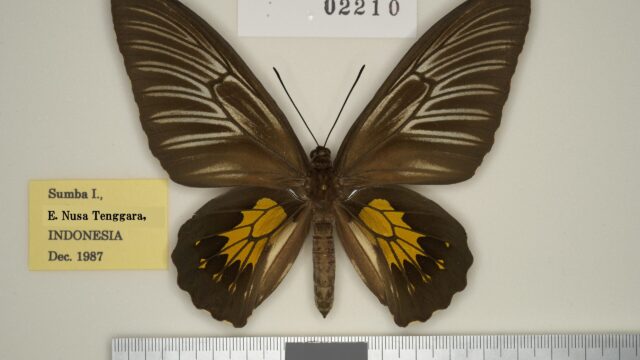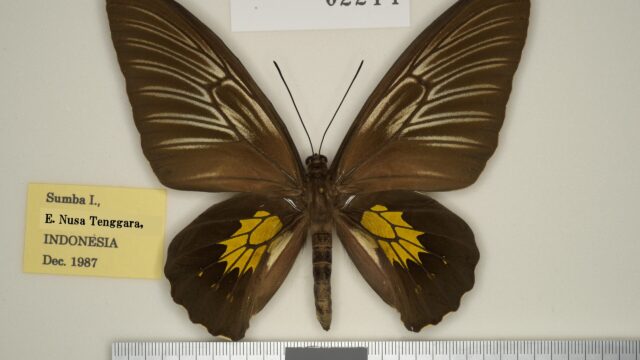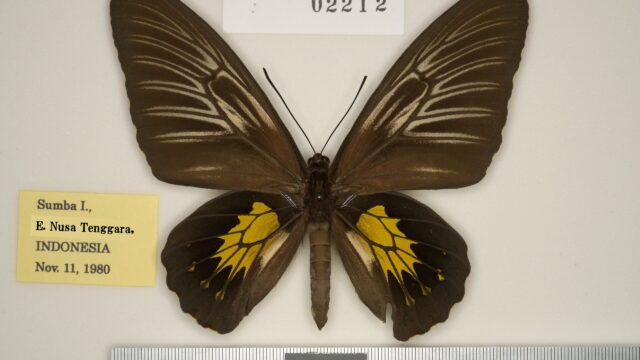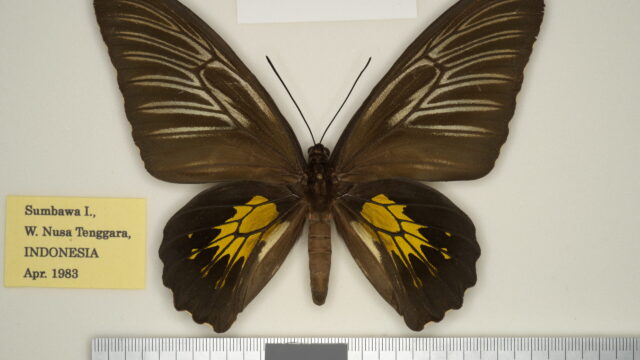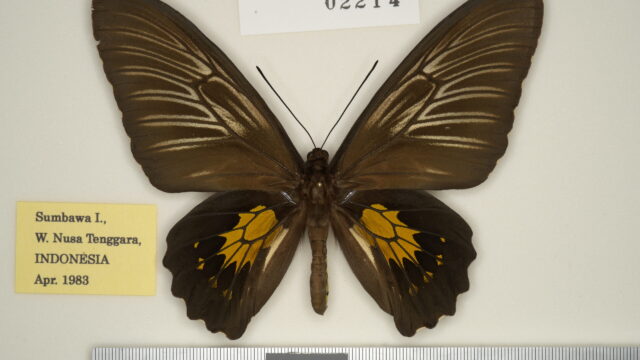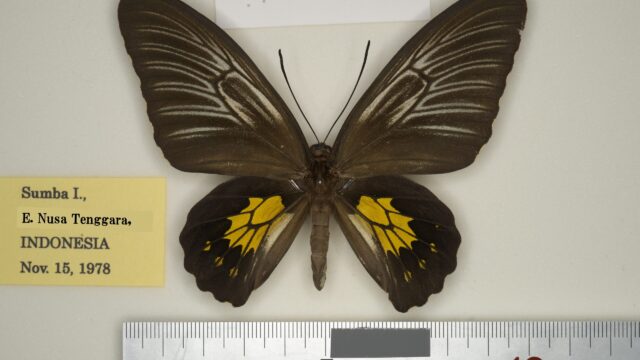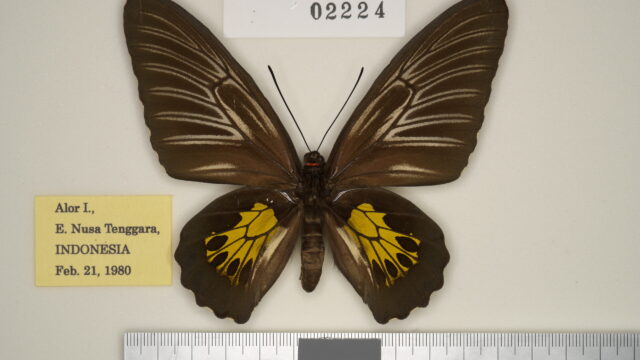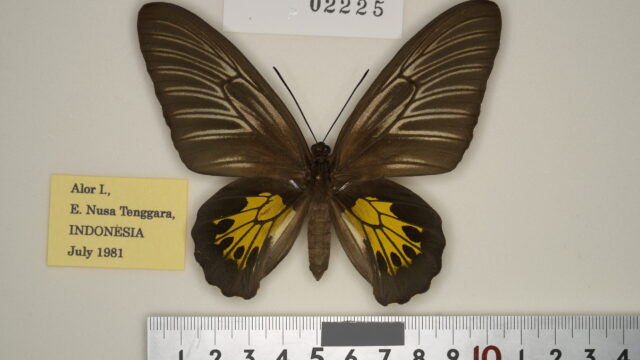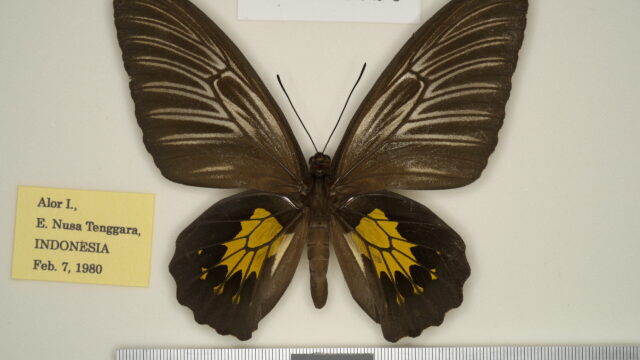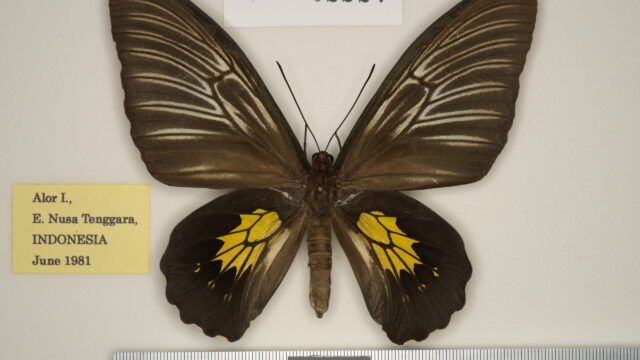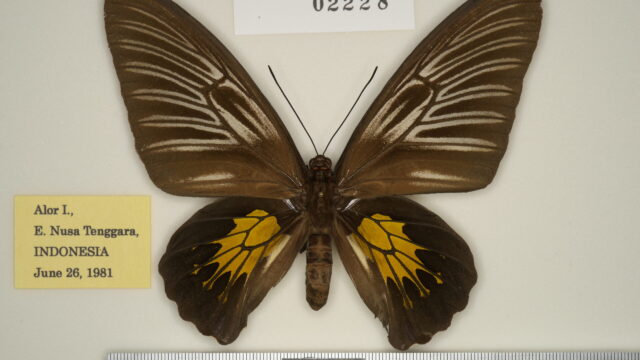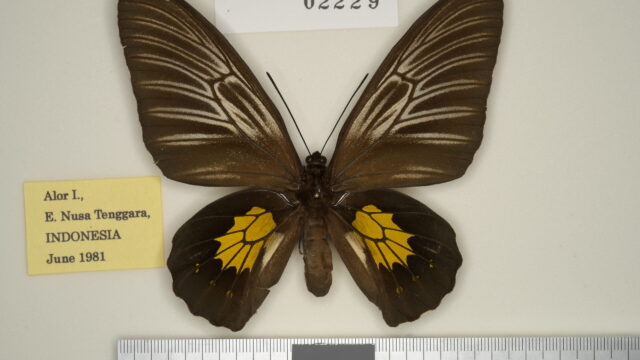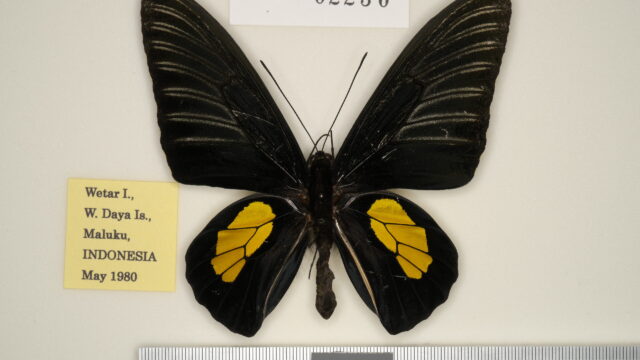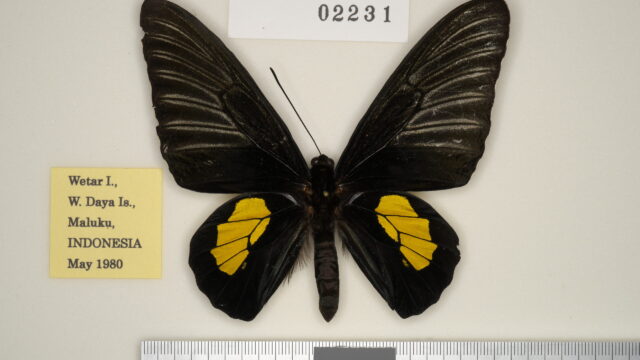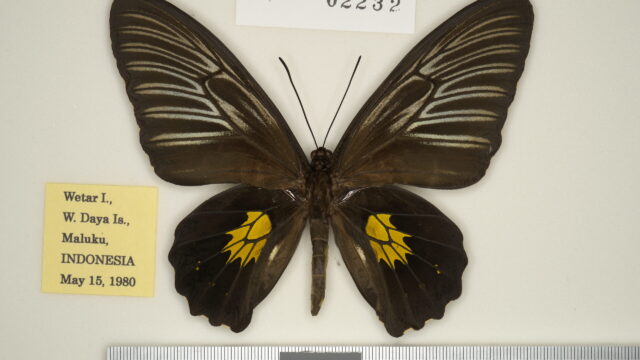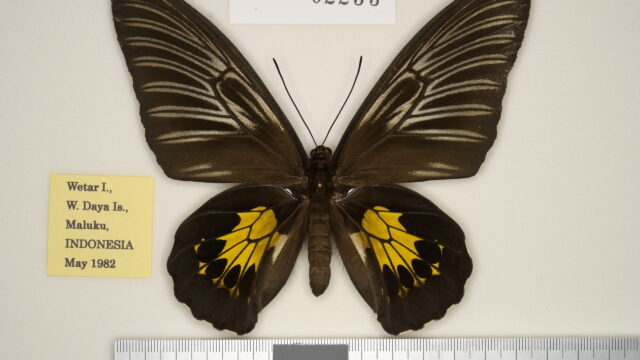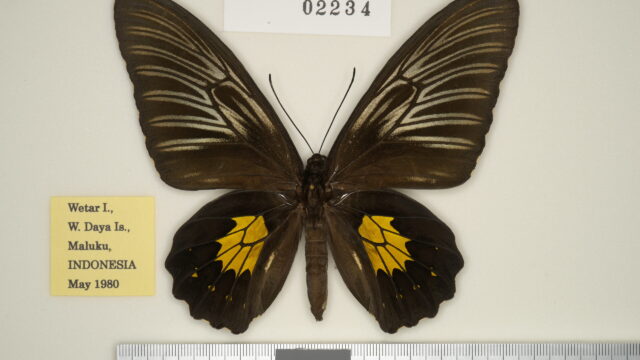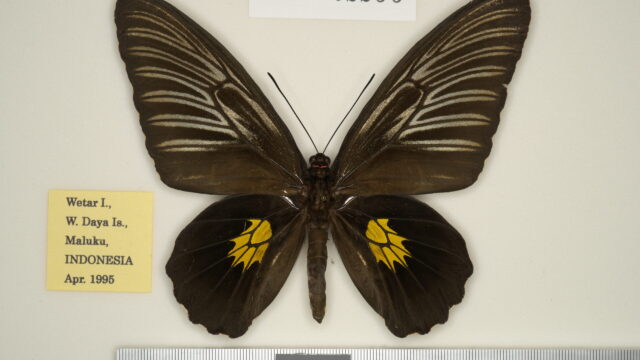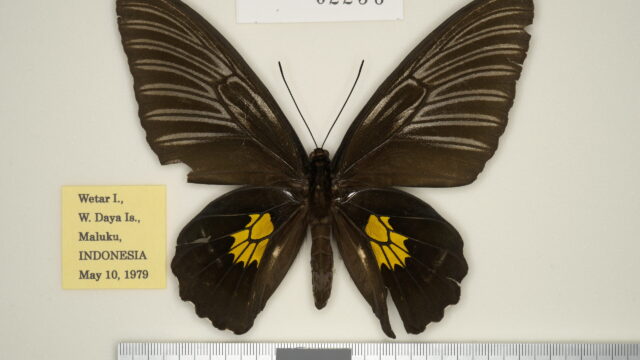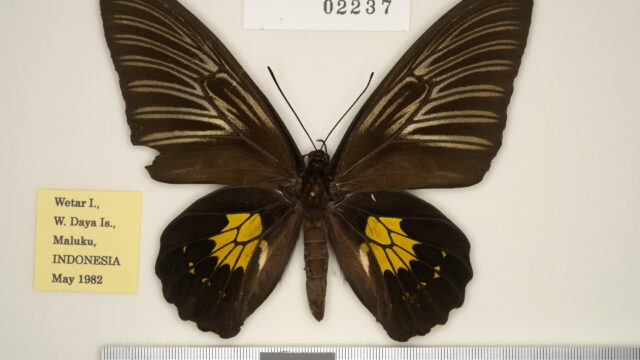- Ssp. naias (Doherty, 1891)2) [♂, ♀]
=kronos Kobayashi, 19875) [♂, ♀] (Lombok Is.)
=antilochus (Fruhstorfer, 1913)4) [♂, ♀] (Alor Is.)
(Distribution) [Map 108]
INDONESIA [W. Nusa Tenggara] Lombok Is., Sumbawa Is., [E. Nusa Tenggara] Sumba Is., Solor Islands (Flores Is., Solor Is., Adonara Is., Lomblen Is.), Alor Islands (Pantar Is., Alor Is.)).
(Episodes of discovery and original description)
Doherty (1891) himself described it in a paper published on the basis of specimens collected on the islands of Sumba and Sumbawa. According to him, the specimens from Sumba Island are independent species, while those from Sumbawa Island are variant sambavana due to the lack of the third space spot on the hindwing of the ♂ and the larger subcostal space spot on the hindwing of the ♀. On the other hand, antilochus from Alor Island, described by Fruhstorfer (1913), has no collector or other details. The subspecies name naias means “water nymph” in Latin, and sambavana is derived from its habitat, Sumbawa Island. The subspecies name “antilochus” refers to Antilochus, the son of Nestor, who was killed by Memnon (Greek mythology).
(Characteristics)
The most widely distributed subspecies of this species, and as a result, there are some variations from island to island, formally, those from Sumbawa Is. was classified as ssp. sambavana, and those from Alor Islands as ssp. antilochus, but nowadays they are often collectively classified as ssp. naias.
(Spotted patterns)
♂: Unlike the previous five subspecies, outer margins of FW and HW are almost not wavy and the anal angle of HW is acute. The semi-translucent golden patches on HW are seen from space 3 (very minute) up to subcostal space. The largest patch is found on the subcostal space, gradually smaller downwards.
♀: The outer margins of wings are mildly wavy and uneven. The cell-spot on FW extends beyond the origin of V2nd. HW differs those of other subspecies in the presence of relatively large yellow subcostal spot and uneven distribution of the dark discal spots to the outside. The spot of the undersurface of HW is yellow rather than cream yellow as in other subspecies.
(Variation)
♂-f. sambavana (Doherty, 1891)2): [Aberrant HW pattern] Lacks the golden patch in space 3 of 5 golden patches usually present from space 3 to subcostal space on HW.
♀-f. sambavana (Doherty, 1891)2): [Aberrant HW pattern] Dark discal spots on HW are reduced.
f. loc. socrates (Staudinger, 1891)14) [♂, ♀]
=pancasila Kobayashi, 19876) [♀] (East Timor (Dili))
(Distribution) [Map 108]
INDONESIA [W. Daya Islands] Wetar (=Wetter) Is., EAST TIMOR: Dili.
(Episodes of discovery and original description)
Staudinger, who described it, thought it was an aberration of T. haliphron when he obtained a fresh one from Wetter Island from Hauptmann Holz in 1886. Four years later, in 1890, he received another pair of specimens from the same island. In addition, he was presented by Neumögen with two ♂♂ (now classified as ssp. naias) collected by Doherty on Sumbawa Island. He described it as a new species in 1891 based on these specimens. The species name, socrates, is derived from the ancient Greek philosopher Socrates (469? – 399 B.C.).
(Characteristics)
Blackened on Wetar Is. and Timor Is. (♂ unknown).
(Spotted patterns)
♂: It is not distinguishable from ssp. naias by its wing shape or spotted pattern, but is characterized by the absence (or very few) of red hair tufts on the neck and lateral thorax.
♀: The ground color of FW is darker than ssp. naias. Blackish brown. Many individuals lack red hair tufts on the neck and lateral thorax as in ♂.
